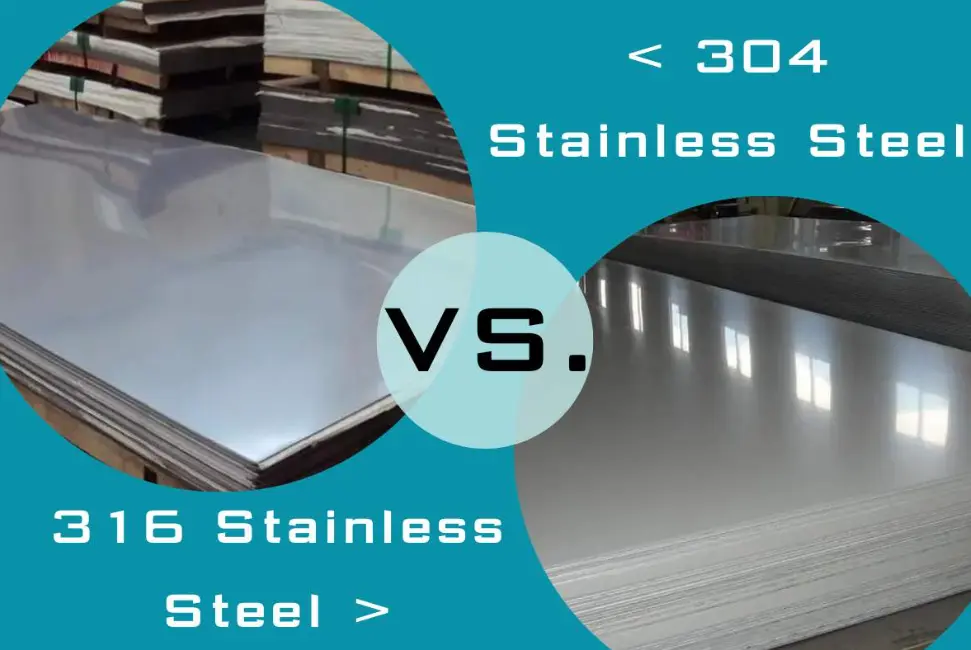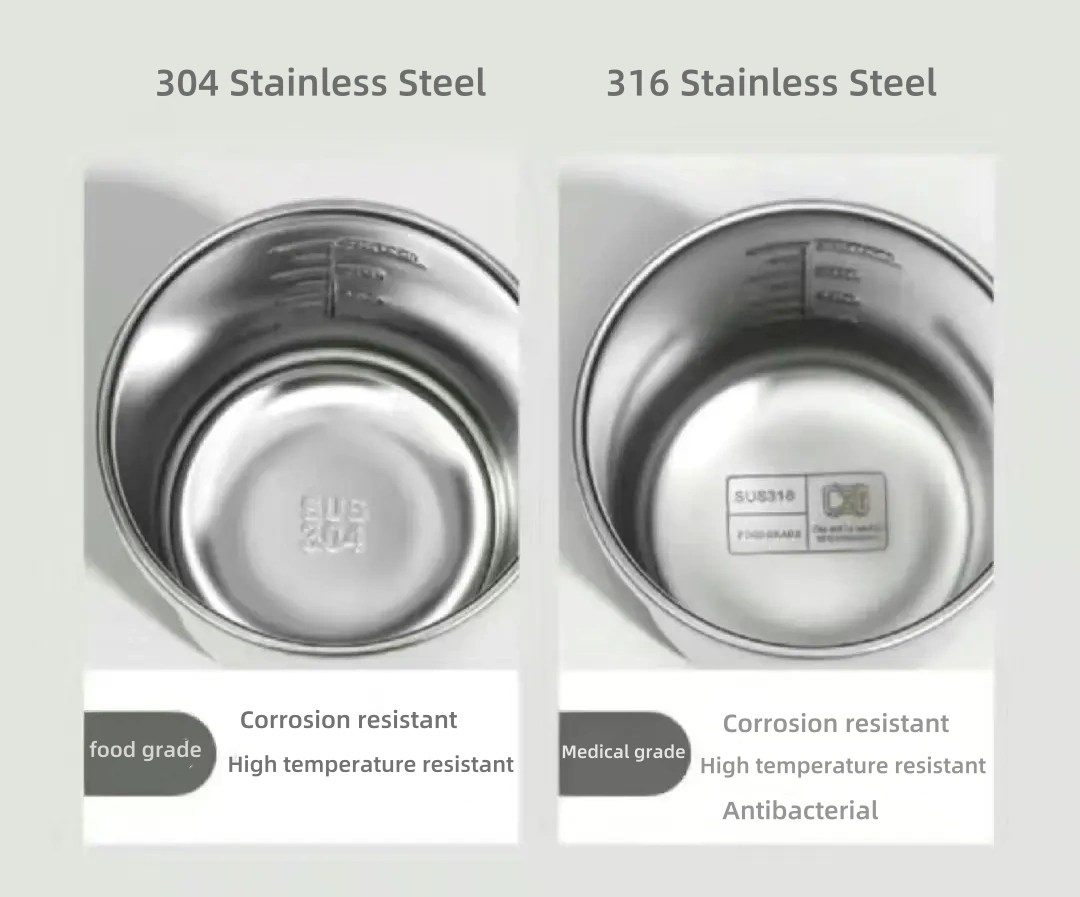Stainless steel products have been widely used in our daily lives, but when faced with many different materials, many people do not know how to choose the one that suits them. However,304 and 316 are two common types of stainless steel that are widely used in various applications. Which belongs to the austenitic grade. However, there are some key differences in their composition and optimal usage environment.

Chemical compositions
304 stainless steel is mainly composed of 18% chromium and 8% nickel. On the basis of 304, 316 stainless steel also adds a 2% molybdenum element, which makes the corrosion resistance of 316 stainless steel more superior.
Different corrosion resistance
304 contains 9% nickel, while 316 contains 12% nickel. Due to the addition of the molybdenum element, the corrosion resistance of 316 stainless steel, especially its resistance to chloride corrosion, significantly better than that of 304 stainless steel. This makes 316 stainless steel perform better in some special environments, such as marine environments containing large amounts of chlorides.
Application
Although 304 and 316 stainless steel are both food grade materials, their application areas are different. 304 stainless steel is widely apply to kitchenware and cookware, and some industrial fields due to its good processing performance and toughness. while 316 is widely used in the fields such as medical devices, food industry, medical industry, and high-temperature or heavy industrial environments due to its excellent corrosion resistance.
stainless steel 304 vs 316 price
As 316 stainless steel belongs to the food grade, it has better performance and corrosion resistance, so the price of 316 stainless steel will be more expensive than 304 stainless steel.316 stainless steel is about 20%-30% more expensive than 304 on average
How do l know if l have 304 or 316?
1.when you look at 304 and 316 stainless steel with the your eyes, there is generally no difference, but the price difference between the two is still quite significant. Because 316 belongs to the food grade and has better corrosion resistance, so its price will be more expensive than 304.
2.Due to the different chemical compositions added to 304 and 316, professional stainless steel solution can also be used to distinguish them. After dripping the medicine on stainless steel, the surface of 304 material generally turns a little red normally, while 316 material will turn black.
3. If stainless steel belongs to 304 material, it cannot be attracted by the magnet. However, the accuracy of this method is relatively low.
In short, if it is only used for home use, 304 material is sufficient, because the characteristics of 304 are also fully in line with household standards, which can also avoid the expensive price of 316 material. Only buying 304 products is enough to meet our daily life.

Kitchenware manufacturers design and manufacture in 304 stainless steel
When designing a kitchenware product, we need to comprehensively consider design aesthetics, functionality, manufacturability, and cost control, which requires kitchenware manufacturers to be very familiar with the performance of 304 stainless steel.
Design aesthetics
304 material properties and molding
304 stainless steel has good tensile strength and toughness. Modern manufacturing equipment can design a kitchenware or cookware into various shapes, and professional kitchenware manufacturers will design the product into a streamlined shape, which not only has a good appearance, but also the user’s grip, pick-up and other user experience are better.
Surface treatment method
In addition, stainless steel is treated by cold rolling, heat treatment, pickling and other methods, and its surface is smoother and more aesthetic, and the user experience is better. Of course, in addition to the common smooth surface, some kitchenware manufacturers also produce stainless steel with 8K mirror and brushed surfaces.
The importance of design aesthetics
In short, design aesthetics is an important factor to be considered at the beginning of the design of a stainless steel kitchenware, which is related to the impression of the product on consumers, and also determines the user experience to a certain extent.
Design of Feature
Functionality undoubtedly plays a core role in the design of kitchenware by manufacturers. Therefore, kitchenware manufacturers should focus on the actual use functions of the products when designing these products. For example, the heat conduction effect of the pot, the sealing of the lid, and the ergonomic design of the handle. Good thermal conductivity can allow heat to be quickly and evenly transferred to the ingredients. A well-sealed pot lid can lock in the freshness and nutrition of the ingredients. A comfortable and easy-to-grip handle can reduce the fatigue of long-term cooking. Taking a wok as an example, the bottom of the pot can be designed with a thick bottom and thin wall structure to achieve fast and even heat conduction, thereby achieving energy saving and high efficiency during the cooking process.
